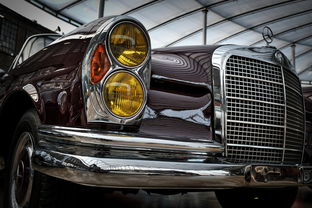Title: A Journey through the History of Automotive Brands: From the Beginning to the Present Day
This article is a fascinating journey through the history of automotive brands, tracing their origins back to the early days of motoring. It covers the development of the first gasoline-powered engines in the late 19th century and how they revolutionized transportation. The article also examines key milestones in automotive history, including the emergence of iconic brands such as Ford, General Motors, Toyota, andVolkswagen.Throughout the article, the authors provide detailed insights into the strategies and innovations that have shaped these brands into global leaders in the industry. They discuss everything from design and engineering to marketing and advertising, highlighting the ways in which each brand has evolved over time to meet changing consumer demands.One of the most interesting aspects of this article is its focus on how the automotive industry has responded to technological advancements in recent years. The authors explore topics such as electric vehicles, self-driving cars, and connected car technologies, providing a comprehensive overview of where the industry is headed in the coming years.Overall, this article offers a compelling and informative read for anyone interested in the evolution of automotive brands. Whether you're a car enthusiast or simply curious about the history of transportation, this article is sure to captivate and enlighten.
Introduction
The automotive industry has a rich and diverse history that dates back to the 1800s. Over the years, numerous car brands have emerged and disappeared, each with its unique story to tell. In this article, we will take a journey through the history of automotive brands, from their origins to their present day operations. We will explore how these brands have evolved over time, reflecting changes in technology, consumer preferences, and global markets. By the end of this article, you will have a better understanding of the fascinating world of automotive branding.
The Early Years (1800s-1900s)
The first automobile was invented by Karl Benz in 1885. However, it was not until the late 1800s and early 1900s that automotive brands began to emerge. Among these early brands were Ford, General Motors (GM), and Daimler-Benz, which later merged to form Daimler-Motoren-Gesellschaft (DMG).

Ford was founded by Henry Ford in 1903 and is credited with revolutionizing the automobile industry by introducing mass production techniques. GM, founded in 1908 by William Durant and Charles Edgar Duryea, quickly grew into one of the largest automakers in the world. DMG, formed by the merger of GM and Daimler-Benz, became one of the most influential automotive companies of the early 20th century.
The Golden Age (1920s-1960s)
The 1920s and 1930s saw a surge in popularity for luxury cars, leading to the rise of iconic brands such as Ferrari, Lamborghini, and Bugatti. During this period, GM also expanded its product line to include affordable vehicles like the Chevrolet and Cadillac, solidifying its position as a major player in the industry.
However, the 1950s marked a turning point in automotive history as countries around the world embraced new regulations aimed at reducing air pollution and improving vehicle safety. This led to the development of smaller, more fuel-efficient engines and increased emphasis on safety features such as anti-lock brakes and airbags.
The Rise of Japanese Automobile Brands (1970s-present)
The 1970s marked a significant shift in the automotive industry as Japan's auto manufacturers began to gain prominence on the global stage. Toyota became one of the first Japanese brands to establish a strong presence in North America when it introduced its Corolla in 1974. Honda soon followed with its Civic model in 1976.
By the late 1980s, Japanese automakers were producing high-quality vehicles that offered superior performance at a lower cost than their Western competitors. This led to a surge in demand for Japanese auto brands, particularly in North America and Europe.

The Present Day (2020s)
Today, automotive brands continue to compete fiercely in an ever-changing market. New technologies such as electric and autonomous vehicles are transforming the way people think about car ownership. Major players like Toyota, Volkswagen, and General Motors are investing heavily in research and development to stay ahead of the curve.
In addition to traditional automakers, new players are entering the scene, challenging established brands with innovative products and business models. For example, Tesla has disrupted the luxury car market with its electric sedans, while Chinese brands such as NIO and Xpeng have made waves with their high-end electric SUVs.
Conclusion
The history of automotive branding is a testament to the enduring power of competition and innovation. From humble beginnings in Germany and America to today's global giants like Toyota and Tesla, these brands have shaped the way we think about transportation and personal mobility. As we look towards the future, it is clear that automotive branding will continue to be a key driver of change in the industry for many years to come.
与本文知识相关的文章:



